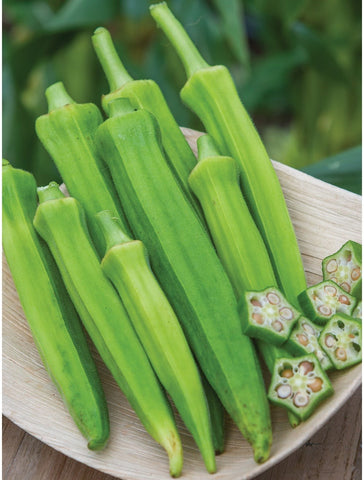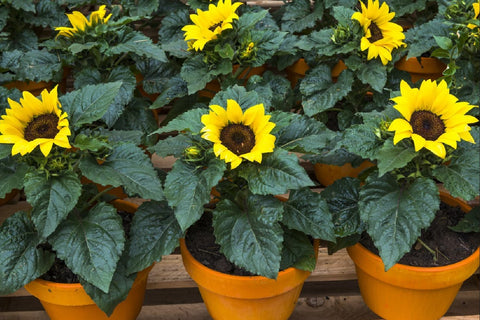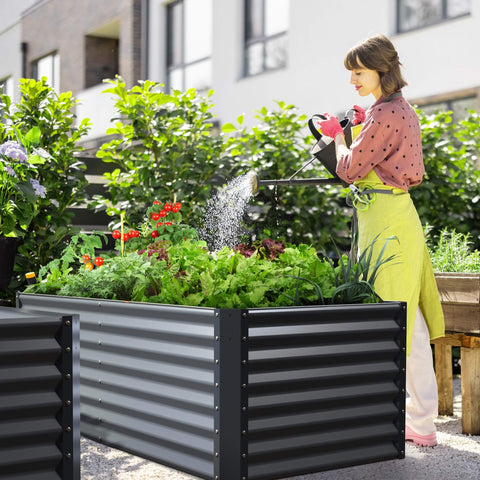In modern society, more and more people are paying attention to a healthy lifestyle, which includes growing their own vegetables. However, in urban life, few people have their own gardens or planted land. A raised bed garden can be a good solution to this problem, as it can create more growing space within a limited space and increase vegetable production. Growing vegetables in a high bed garden requires some special tips and precautions, this article will show you how to grow vegetables in a high bed garden, and how to maintain and manage a high bed garden.The following content also has some reference value for raised garden beds.

- Introduction
A raised bed garden is a way of growing flowers and plants in a raised mound or container. The advantages of high bed gardens over traditional gardens are better soil drainage and easier management and maintenance. Vegetables can be grown in high bed gardens for higher yields and better quality. This article will show you how to grow vegetables in a raised bed garden.
- Choose the right location and materials
Choosing the right location and materials is very important for creating a raised bed garden. First, you should choose a sunny, well-drained location. Avoid creating a high-bed garden under shade or in standing water. Secondly, we need to choose the appropriate container material. Common materials include wood, stone, concrete and metal. In general, wood is the most commonly used material because it is easy to work with, inexpensive and suitable for use in gardens.
3 Prepare the soil and fill the raised bed
Plenty of soil and filling material should be prepared before preparing a raised bed garden. A mixture of organic fertilizer, peat soil, perlite and decomposed compost is recommended to fill the raised bed. These materials can improve soil structure, increase soil nutrition and improve soil drainage. It is important to note that high quality soil and filling materials should be selected to ensure healthy plant growth.
- Grow vegetables
In a high bed garden, it is very important to choose vegetables suitable for growing in a high bed garden. You can choose leafy vegetables, root vegetables, jackets, beans and other vegetables. Before planting, you should make a planting plan and layout to determine the planting location and spacing of plants. In general, vegetables of the same kind should be kept together and different kinds should be planted alternately. At the same time, the proper watering and fertilization should be determined according to the growth needs of the plant.

- Pest and herb control
Pest and disease and herb control in high bed gardens is an important issue. Natural and organic methods can be used to control pests and germs, such as using organic fertilizers, attracting natural control agents and control herbs. In addition, the use of chemical methods such as pesticides and fungicides is an option, but needs to be used carefully to avoid negative environmental impacts.
- Maintenance and management
High bed gardens are very important to maintain and manage, which will help keep vegetables growing and healthy. The garden can be maintained by regular pruning, weeds removal, deworming, etc. High bed gardens can be better managed by using tools such as watering machines, fertilizers, pruning shears, etc.
- Harvest and store
Harvesting and storing vegetables is also an important part of a raised bed garden. The time to harvest vegetables depends on the type of plant and the growth rate. It is important to note that vegetables should be harvested after they are fully ripe. After harvest, vegetables can be stored in a suitable environment, such as the refrigerator or pantry, to maintain their freshness.

- Conclusion
Higher yields and better quality can be achieved by growing vegetables in a raised bed garden, along with benefits such as better soil drainage and air circulation. When setting up a raised bed garden, you need to choose the right location and materials, and prepare the soil and fill materials. When growing vegetables, you need to choose vegetables suitable for growing in a raised bed garden and water and fertilize the plants according to their growing needs. Natural organic or chemical methods can be used to control pests and germs when maintaining a raised bed garden. Maintain the garden by regularly pruning, weeding, deworming, etc. Harvest vegetables after they are ripe and store them in the right environment to maintain their freshness.
All in all, growing vegetables in a high bed garden is a pleasure. Not only can you get fresh vegetables, but you can also create a beautiful garden. In this article, we cover how to choose the right location and materials for a raised bed garden, how to prepare soil and fill materials, how to choose vegetables suitable for growing in a raised bed garden, and provide advice on maintaining and managing a raised bed garden. Hopefully these tips will help you create a beautiful, healthy raised bed garden and enjoy the joy and satisfaction of growing your own vegetables.









